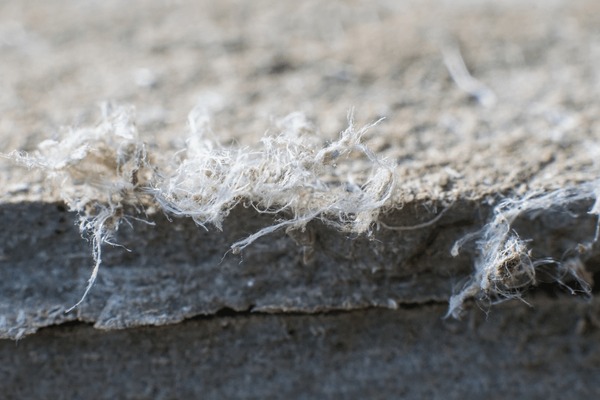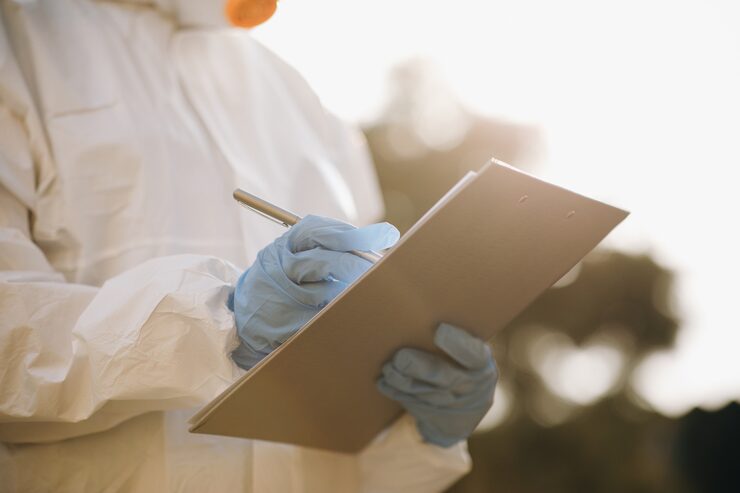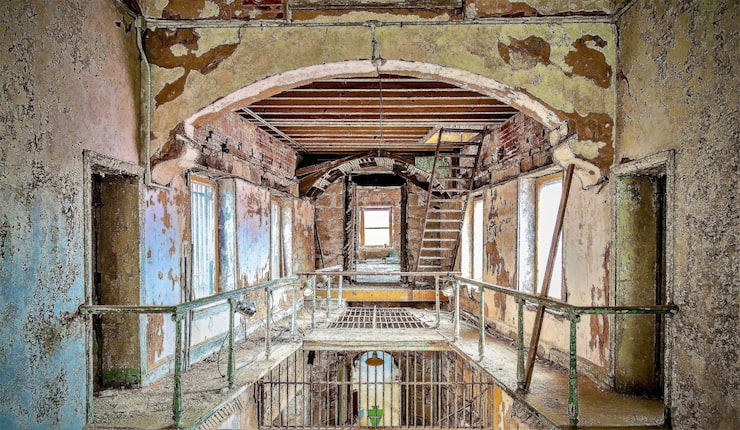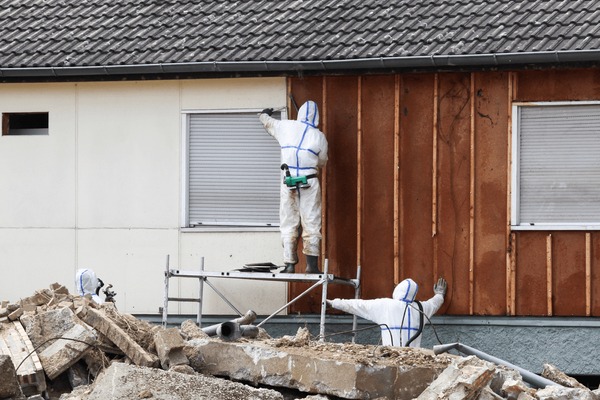Fibro and Asbestos are two entirely different components. While asbestos production and usage in Australia have been banned, fibro is used as a common construction material. Want to know the difference between them? In this article, we are going to explore the overall differences between fibro and asbestos and determine how to identify them.
Fibrous Cement Sheeting, commonly referred to as fibro, is a construction raw material utilized in roofing and cladding. This material is created from different fibres to develop a thin sheet of cement. On the other hand, asbestos, a mineral fibre, is a durable material used in construction because of its durability, thermal insulation, and conductivity.
Understanding the difference between asbestos and fibro matters for house owners and renovators because asbestos is harmful to public health and banned for public use. We will learn the key differences between them, but first, let’s understand a basic overview of both asbestos and fibro.
Basic Overview of Fibro and Asbestos
In the construction industry, fibro and asbestos often become confusing terms because of their similar application in terms of building materials. But what is fibro? How does it differ from Asbestos? Let’s get a basic overview of these building materials.
What is Fibro?
Fibro is a building material that has different fibrous elements. During the 1980s, asbestos was used in fibro. However, asbestos-based fibro was completely banned in 1987, and since then, fibro has been strengthened with cellulose instead of asbestos. ‘Fibro’ cement is nowadays a safer building material as the fibrous cement uses synthetic fibres as its main component.
Common Application of Fibro
Fibro is used in the Australian construction industry because of its multiple applications in the industry. Fibros is utilized to construct ceiling lining, roofing, and cladding.
What is Asbestos?
Asbestos is a mineral that is available in the environment, which is resistant to heat and corrosion. It was largely used in Australian construction before the 1980s because of its high level of fire resistance, excellent heat conduction, and low cost.
Asbestos has been entirely banned in Australia since 2003, which included a total ban on producing, using, importing, and selling the material. Asbestos usage was phased out in the construction industry in the 1980s.
Fibro vs. Asbestos: Key Differences
Here is the key difference between Asbestos and Fibro:
-
Composition
Asbestos contains harmful microscopic fibers that can result in severe health risks. On the other hand, modern fibro cement is prepared from safer material, which mostly contains cellulose. However, older fibro can contain asbestos, which can be unsafe if disturbed.
-
Appearance
Asbestos-induced materials and fibro are also different in terms of appearance and texture. Asbestos materials are rough and often have a fibrous texture that has a white or grey appearance. On the other hand, modern non-asbestos fibro has a smoother texture, which has a stark difference associated with asbestos.
Asbestos fibro cement was prepared from a mixture of cements, asbestos fibres, and other materials. On the other hand, modern fibre cement sheeting does not contain asbestos fibre as it has now been replaced with cellulose.
-
Health Risks
Modern asbestos-free fibro is safe to use because it does not contain any harmful chemicals. Conversely, asbestos has been a highly harmful substance, causing several health issues such as lung cancer, asbestosis (scars in lungs), and Mesothelioma.
This asbestos can spread in the environment when disturbed through activities like cutting, drilling, or demolition of older properties in Australia.
Here is a table describing the key differences between asbestos and asbestos-induced fibro:
| Feature | Fibro | Asbestos-containing Fibro |
|---|---|---|
|
Composition |
Made from cement and cellulose fibers | Made from cement mixed with asbestos fibers |
|
Years Commonly Used in Australia |
Mid-1980s onwards (asbestos-free) | 1920s – mid-1980s |
|
Appearance |
Smooth or patterned, often marked “asbestos-free” | Looks similar to fibro, sometimes has a textured appearance |
|
Durability |
Strong, safe, widely used in modern construction | Brittle with age, dangerous when disturbed |
|
Legal Status |
Approved and safe building material | Banned in Australia since December 2003 |
Table 1: Difference between Fibro and Asbestos-induced Fibro
How to Identify Asbestos in Old Fibro
In old fibro, asbestos identification becomes complicated without professional expertise. It is always essential to consult an expert company for a proper assessment of the materials.
-
Age of the Building
The property’s age can be a parameter for safely identifying asbestos. Mainly, constructions made before the 1980s are more likely to contain asbestos. However, the safest way to identify this is by hiring professional experts who can inspect asbestos and assess the construction site thoroughly.
-
Lab Testing for Confirmation
Materials like corrugated roofing can contain asbestos-containing material. However, getting the sample checked from a certified laboratory to get 100% confirmation.
-
Visual Clues to Identify
Some visual cues can be used to identify asbestos. In asbestos-induced materials, the wavy style in the sheeting pattern which caused during the manufacturing procedure. Plus, asbestos-containing material is prone to breaking with a sharp edge. However, a lab test is a confirmed way to know about the presence of asbestos.
Why DIY Identification of Asbestos in Old Fibro is Risky
Roughly one-third of Australian homes contain asbestos. Trying to identify asbestos DIY can be highly risky, as you can be exposed to harmful asbestos particles. Therefore, disturbing insulation, vinyl floor tiles, and roof shingles is not recommended, especially for houses built or reconstructed before 2000.
Furthermore, asbestos fibres are microscopic, so you can not properly see the asbestos particles with the naked eye. Untrained individuals cannot identify asbestos properly without using the right tools or any lab tests. Trying to do this will expose you to ACM, and you may inhale some asbestos particles. This can cause serious harm to your lungs, particularly leading to lung scarring and lung cancer.
How Asbestos Exposure Can Occur
Asbestos exposure can happen in several ways. Breathing air containing asbestos particles and handling asbestos-containing materials are common areas where asbestos exposure can happen. Many people still do not understand the difference between fibro and asbestos and often disturb asbestos-induced area.
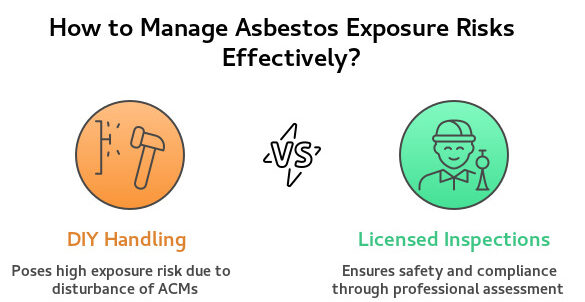
How DIY Handling Can Expose Homeowners to Asbestos?
Homeowners often disturb a suspected asbestos-prone area or handle ACMs while doing DIY renovations in their homes. Furthermore, activities like drilling, sawing, or sanding in older homes contain asbestos material. Both floor tiles and ceiling tiles can contain asbestos, so moving or touching these in older properties can expose you to asbestos.
Importance of Licensed Asbestos Inspections
Licensed asbestos examinations are the priority to be carried out to identify ACMs.
Health and safety reasons for asbestos inspection include preventing serious illnesses, quick detection, and worker protection. Furthermore, it also helps with regulatory compliance in Australia. In Australia, asbestos is mainly controlled under the Work Health and Safety (WHS) Act and regulations.
Safe Management and Remediation
Secured management and displacement of asbestos is highly essential for preventing the spread of asbestos and protecting individuals from unwanted asbestos exposure.
When Professional Asbestos Testing is Required
Professional asbestos testing is required when someone is renovating or relocating their house. Furthermore, damaged sections like fraying and crumbled parts of properties can also be checked by professional asbestos testing service providers.
Inefficient handling of asbestos-induced material can result in risky exposure. To avoid this risk, it is essential to hire professionals who are experienced and can take the risk for you.
Wrapping Up
Fibro is a safe and asbestos-free alternative that is not harmful and commonly used as a construction material. On the other hand, asbestos is highly harmful to public health. Both are different in terms of composition and usage timeline. To avoid the harmful influence of asbestos, consider hiring professionals and experienced asbestos inspectors.
Thinking of Renovating an Older Property in Australia? Consider Professional Asbestos Testing Before It!
Do you own an older property in Australia? Consider booking a licensed asbestos tester before renovating or selling it.
Frequently Asked Questions
Is Fibro Waterproof?
Yes, Fibre cement sheets are resistant to water and waterproof. Fibro cement is made of non-porous material, which makes it water-resistant.
Is Fibro Asbestos?
No. Fibro and Asbestos are two different building materials. Fibro cement is made of synthetic fibre cellulose, while asbestos production and usage in the construction industry have been banned. Asbestos was used in fibro before the 1980s, but now it is entirely restricted in Australia.
How Long Does Fibro Cement Last?
The service life of Fibro cement is very high. It is highly weather-resistant and can withstand cracking or rot. It can last as long as 50 years.
How Do I Dispose of Asbestos Waste?
You need to consult your regional council first to understand whether you can dispose of the asbestos waste through a licensed waste manager. Consider the weight limitation while carrying the asbestos waste.


